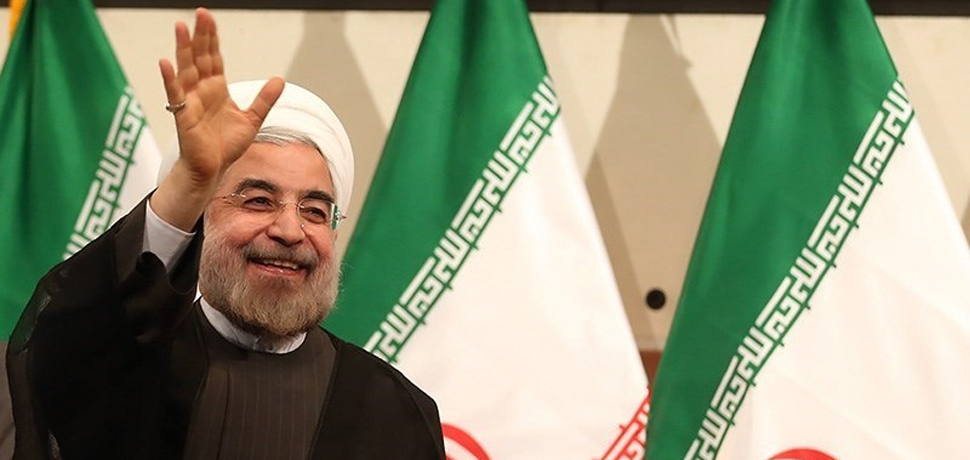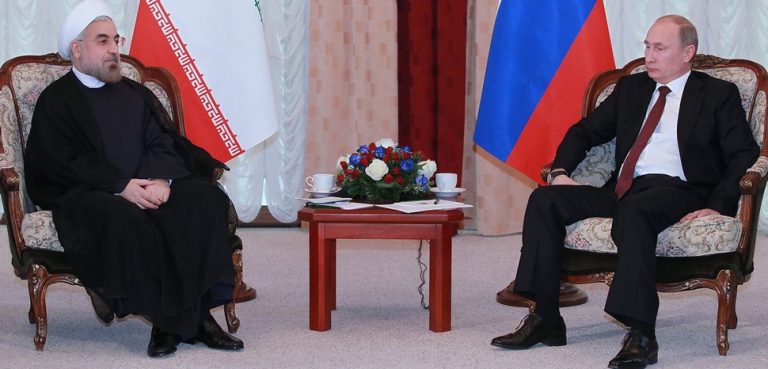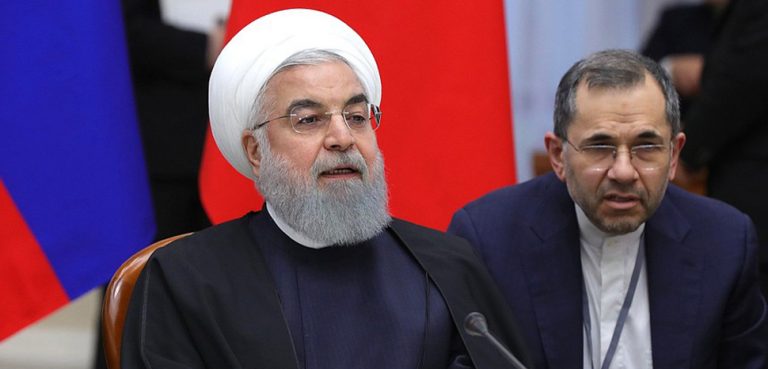On November 5, the Trump Administration rolled out a host of sanctions targeting 50 Iranian banks and their subsidiaries, the national airline, and 200 members of the shipping industry. The purpose? Cut off Tehran’s oil revenue and damage the regime’s nuclear capabilities.
It’s not exactly a secret that Iran has had a tense relationship with the Western world, dating back to the Islamic Revolution in the 1970s. Our goals are obviously not aligned, but if there’s anything we can both identify with, it’s being victims of consistent politically-motivated misconceptions. Actually, let’s not play with words here: blatant propaganda. We associate the word with negative connotations, but it’s a lot more common than you’d think. Any national government with an interest in morale and support either directly or indirectly has their hand in some sort of propaganda program aimed at boosting patriotism. It’s not even necessarily a bad thing, but when facts and reality start to become a victim in the quest to rally the people, that’s a problem.
Iran, from every fact-based viewpoint, has committed many atrocities and human rights abuses. Their suppression of freedom of speech has no justification and when compared to growing personal liberty around the world, its crimes are even more despicable. But that doesn’t give its adversaries, no matter how much of the moral high ground they occupy, an excuse to stretch its crimes and exaggerate certain aspects of Iranian life. Facts speak volumes on their own, there’s no need for a government to bolster the obvious. So, for the sake of facts, let’s dispel some inaccuracies about Iran:
“Iran Is a Dictatorship”
To the average observer, it’d be easy to come to the conclusion that Iran’s political system is dominated by men in robes carrying AKs who plan terrorist attacks by day and carry them out by night. And while it’s true that the political scene in Tehran is treacherous, the governmental system is actually quite democratic.
Unlike US allies in Turkey and Saudi Arabia, who are almost exclusively controlled by a select group of leaders at the top, Iran’s parliament has a relatively large amount of power. Iran’s president, who is elected from a slate of candidates nominated by an array of political groups in the country, is directly selected via popular vote. There are, however, needless to say, a few restrictions. The Council of Guardians, a government-organized institution, vets all candidates running for office and can disqualify office seekers for any reason they see fit. The Assembly of Experts, a non-elected body of religious, political, and military leaders are also responsible for selecting the supreme leader, who unlike the president, is not chosen by the people and serves a life term. But at the end of the day, most decisions made by the people’s elected representatives are respected by the Imams.
“Iran Is Closed to US Visitors”
As previously mentioned, the United States and Iran are known to be not particularly close. And since the 1979 embassy crisis when Iranian revolutionaries kidnapped U.S. diplomatic personnel, many have been left with the impression that Iran is closed off to international visitors, which is simply not the case. While the Iranian government considers applications to visit the United States on a case-by-case basis, US citizens are completely free to enter Iran at any time. While the United States does not have an established diplomatic presence in the country, operations are usually run out of the Swiss embassy, where U.S. citizens can go to seek out help if needed. However, all US citizens who travel to Iran are forced to go through a process with the United States government, which includes fingerprinting and surveillance.
“Iran Is a Third-World Country”
According to reports from researchers at the University of Tehran back in 2011, around 44-55% percent of Iran’s urban population lives under the international poverty line. The state of the Iranian economy is currently transitional, with some 60% of it being planned or government-controlled. Needless to say, a large portion of the economy is based on the public sector, particularly the oil industry. But while it understandably doesn’t have the best living conditions in the world, Iran isn’t as backward as most would believe. Despite the fact that 20% of the population does live in poverty, that’s relatively mild compared to neighbors like Iraq, where over 53% live in poverty. In the Global Finance 2016 international ranking of international wealth, highest-to-lowest, Iran came in at 70th, higher than Brazil, South Africa, Jordan, India, and Ukraine. Iran’s main issues have consistently been corruption and unemployment, both of which the administration of moderate Hassan Rouhani has taken efforts to correct. Otherwise, Iran continually ranks second in the world in natural gas reserves and fourth in proven crude oil reserves, according to the World Bank. Overall, while Iran has faced numerous problems on its path to modernization, it could in no reasonable way be described as third-world or destitute.
“There Is No Legal Opposition”
In the years directly following the Islamic Revolution and upheaval in the late 70s, politics in Iran was dominated by extremists and nationalists. Due to tough domestic conditions and the Iran-Iraq war, Ayatollah Khomeini and his supporters, a mix of religiously motivated fanatics and nationalistic purists, were able to legally wrest power away from the centrist coalitions and their other opponents, the Republicans.
Following the end of the war and the return of economic growth as well as stability, the Islamic Republic Party collapsed, and several reformist parties sprung up in urban areas. Out of the six presidential elections to follow, moderates and reformers like Rouhani, Akbar Hashemi-Rafsanjani, and others won four. Two were claimed by nationalist remnants of the Revolution, led by the likes of Mahmoud Ahmadinejad.
Contrary to popular belief, in recent history, Iranians have had a strong tendency to reject the more nationalistic elements of the political system when given the choice, opting for pragmatists and progressives. Not only do opposition parties exist in the Iranian political system, in recent years, they’ve actually been outdoing their more traditional competitors. In the last presidential contest during 2017, Rouhani was re-elected in a landslide with almost 60% of the vote.
“Christianity Is Illegal in Iran”
It’s undeniably true that Iran is majority Shiite Muslim, and as a result, persecution of religious minority groups such as Sunnis, Christians, Buddhists, and Jews is a constant problem that’s caught the attention of international groups over the years. But many blanket statements about the lack of diversity of religion in Iran, both in the past and modern times, are not completely true.
Christian communities in Iran have lasted over a thousand years, predating the arrival of Islam. In fact, the Acts of the Apostles points out that Persians and Medes were among some of Christianity’s earliest converts. Through the ages, many religious groups periodically took power in the nation, including Zoroastrians. Because of this, even after the Revolution, the country’s constitution went out of its way to officially recognize Christianity and other minorities in its legal system. The conflict between the predominantly Shiite populace and Christian minorities usually occurs as a result of the country’s strict adherence to Islamic laws and customs, which contradict a few major biblical principles. In fact, usually, when Christians are caught up in legal troubles it’s for legal reasons pertaining to the law, not specifically because they are Christian. The Iranian Constitution even states: “the investigation of individuals’ beliefs is forbidden” and that “no one may be molested or taken to task simply for holding a certain belief.” So barring any blatant violations of Iranian laws or customs, usually, Iranian Christians are allowed to practice their religion in private. Today, there are around 600 public churches across the country, with an estimated 300,000 attendees nationally. All religious minorities are allowed to vote, and even hold governmental positions; and five seats in parliament are specifically reserved to represent these groups. However, only Shiite Muslims are permitted to sit on any of the councils or become president.
The opinions, beliefs, and viewpoints expressed by the authors are theirs alone and don’t reflect the official position of Geopoliticalmonitor.com or any other institution.




